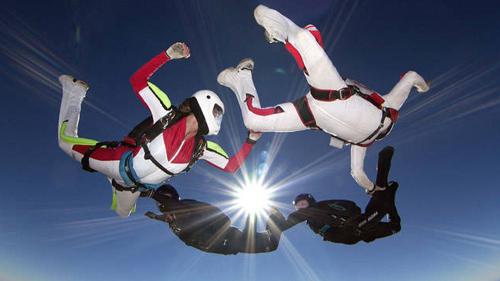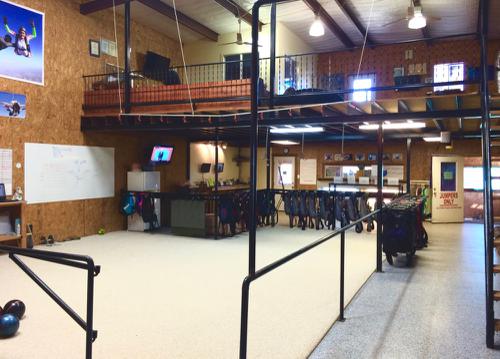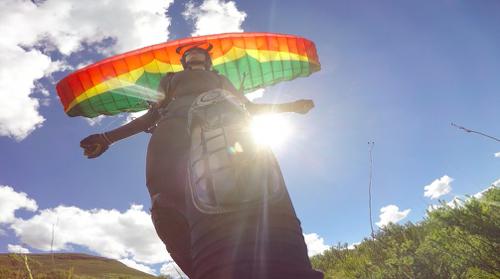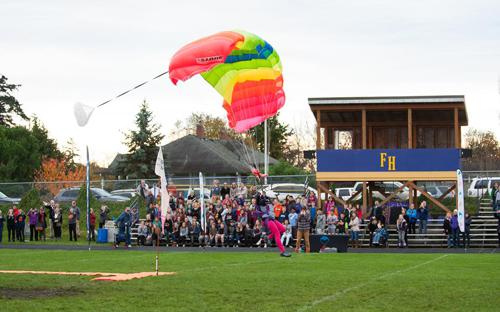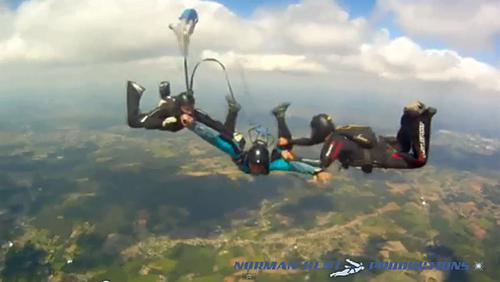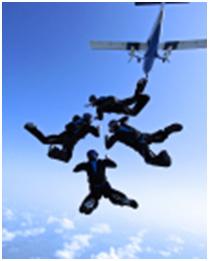A self-taught man usually has a poor teacher and a worse student. -Henny Youngman
Skydiving is a sport in which all all participants seek improvement in skill and confidence in their skills. Coaching plays a significant role in setting goals, testing the goals, and reviewing the tested goal. The illustrations in this article are from wingsuit students, and this conversation is predominantly directed towards coaches beyond Cat G/H USPA standards whether they’re teaching canopy control, freeflying, RW, wingsuiting, CRW, freestyle, accuracy, or any other aspect of the skydiving culture.
This article predominantly speaks to advanced coaching, yet the principles also apply to ISP coaching.
Students have a right to expect a quality experience. Students also have a right to expect that they’ll complete a training investment with greater skill, competence, knowledge, or a combination of abilities. Not only should coaches/instructors be well-versed and trained in how to instruct,they also must keep current in the sport using resources available via USPA, community education, advanced instruction, and reading books benefiting both the coach/instructor and the student in the long run. The USPA provides an excellent primer in the basics of training, yet it’s extremely beneficial if additional resources are pursued.
In short, being an effective coach/instructor involves continuing education and seeking the best methods and practices in teaching vs finding the fastest way to receive and keep a rating. A good coach or instructor creates the foundation upon which a student makes conscious decisions throughout their skydiving career.
A proper program provides kinesthetics, muscle memory training, horizontal and vertical training positions. Well-spent time on the ground provides for a much better in-air experience.
Unfortunately (as in any educational setting) there are coaches in skydiving who are good in the sport yet cannot skillfully teach. Many coaches do not understand the methodology behind practical training. Instead, students are taught using the theory of “this is how it worked for me, now you go do it.” A skilled trainer/coach/instructor, on the other hand, should be able to teach on virtually any topic to anyone, because they properly understand the process of breaking down a task or objective into a series of attainable goals that eventually combine into a skill or greater self-empowerment.
When one is seeking out a coach, identifying the person most naturally skilled in the objective you wish to achieve seems intuitive. However, selecting someone who is a world champion in this or an award winner of that, may actually be counter productive. The champion has spent most of their time refining the final 2% of their skill necessary to put them above another competitor. Further, they may not have the skill set to properly pass along their skill set, simply because it is self-contained, self-trained, and misses the logic and requirement to understand the skill from a no-knowledge starting point.
When one is making the decision to become a coach, having an instructional background or seeking training from a coaching professional or attending a few instructor-skills classes will make a significant difference in your effectiveness as a teacher. Most USPA Coach Examiners offer a basic level of instructional technique, yet it’s recommended that coaches receive additional training from outside educational resources.
Coaching isn’t about you. It’s about the student. Too much information too quickly is overwhelming and students are unable to retain key points. This is easily the number one mistake rookie coaches and instructors make when trying to help someone reach a goal. It’s especially true when helping someone new in their discipline or activity. While it seems like the right thing to do, it isn’t. Refrain from teaching about hips, head, arms, legs, feet, shoulders, elbows, knee pressure, stomach/core, and angular motion all at once.
It’s just not going to work.
A good coach understands biometrics, understands how to improve poor body position with a single (at most two) changes, and can process the cause of body position issues very quickly.
Additionally, a good instructor knows how to assess individual learning styles by asking a few short yet revealing questions. By applying techniques targeted for each person’s individual learning style, the training session becomes even more effective.
A capable and professional coach/instructor:
Has a series of goal-identifying questions.
Uses multi-layered listening skills.
Has learned both tactical and strategic coaching methods (do they have multiple methods to achieve a specific result?)
Discovers in-the-moment coaching opportunities that ignite an effective and fun dialog.
Crafts coaching approaches that lead to student success.
Understands the importance of “centering”.
Recognizes what levels of information are “TMI” at an individual level.
Can demonstrate flying skill to provide in-air feedback and proximity.
In the below video, a skydiver attended different wingsuit schools wanting to achieve the same objective. The two jumps are back to back. The video on the left is a coaching jump at School “A” and the right half of the video is the next coached jump/same task trained at School “B.”
School “B” uses a “pro-active coaching” method including kinesthetics/proprioception based on standard sport instruction.
The results demonstrate very different results for an identical task. Quality coaching does make a significant difference in speed and quality of advancement.
An “instructor” must determine whether they are a “Coach” or a “Counselor.” A coach provides direction to orient and train for a specific skill set agreed upon by student and coach. Coaching is a mentorship process. A counselor, on the other hand, is a supportive process where the student is largely responsible for self-training and obtains feedback from a peer more skilled in the task or discipline.
Using the above video, note the proximity of the coach to the student in the “B” side of the video. The coach knows in advance of where the student will be (In skydive coaching, the student is virtually always the base of the coached skydive). The student has specific tasks to perform that are tested on the ground prior to boarding aircraft. The coach has specific responses to perform when the student performs their portion of the objective. During the debrief, challenges to achieving the task are identified and discussed by the coach and student, with both parties providing input and feedback during the debrief process.
The coach is causing a poor body response/result via their position relative to the student, and providing incorrect hand signals. The student is forced to look up, creating a brake. The end result in this instance is deep potato-chipping and instability (as seen in the video).
SAFETY
A coach’s foremost responsibility is to the safety of the student. A primary motivation for students is to not only progress in their discipline of choice, but to also be safe in the pursuit of excellence.
In the above video, the coach intentionally flies into a hazardous situation where both he and the student are at risk (Left side of display. Aside from a violation of the FARS (in the USA), diving after a student into clouds is not something any coach should be doing. A coach should never add risk to a jump but rather, take all available steps to decrease risk to a student and themselves.
The coach/student combination on the right side of the image demonstrate proper proximity, keeping both student and coach in a safe environment.
Coaches/instructors must possess appropriate skills that ensure safe practices are at the fore of every jump.
In the above video (FFC-4) the coach intentionally flies into a high-risk situation. This is unacceptable. Aside from a violation of the FARS (in the USA), diving after a student into clouds is not something any coach should be doing. A coach should never add risk to a jump but rather, take all available steps to decrease risk to a student and themselves. Coaches/instructors must possess appropriate skills that ensure safe practices are at the fore of every jump.
BRIEF/DEBRIEF
New coaches often discover where they may have lacked in communicative skills during the initial training process (although these errors typically make themselves known in the ground test/dirt-dive phase) and find themselves improving as a result of beginning from a consistent training/debriefing method. A debrief session usually begins by asking the student for a self-assessment of the jump, and finishes by showing video after the coach has provided observations. This is also where professional instructors summarize the experience using the GROW method (Assess the Goal vs the Reality of the jump, identifying the Obstacles/Options challenging the task, and what our Way forward to success should be) or some facsimile of the process.
On the left is School “A” and on the right is School “B,” both being First Flight Course/wingsuit training examples. In the video on the right, the coach is flying to the student (student is base) and maintains proximity in order to best provide hand signals and responses to the student’s maneuvers. For video debriefing, the instructor should be close to best identify body position changes and how they affect flight.
Not being near the student also creates an unnecessary risk to everyone on the jump.
STUDENTS
When choosing a coach, look for;
Reputation for quality of instruction/experience in the discipline
A long-term safety record
Measurable tasks and progression that achieves a specific, desired outcome or finishing point.
Access to supplemental or specialized equipment (if necessary)
Availability, flexibility, and ability to create a program suited to individual needs
Cost of training/Value compared to cost
When meeting with a coach:
Set goals. A good coach will help define what’s achievable.
Define exactly how you and the coach will attain the goal. People are unique, and have different ways they learn, different paces at which they learn. Can the coach tailor their program to meet your needs?
Be sure that each jump includes a comprehensive debrief. This is critical to any progression in any discipline.
Remember that all training is not equal. Quality coaching may cost a small bit more, particularly discipline or activity-specific training. If it’s skill advancement or safety-related, it’s virtually always worth the minimally extra cost.
Receiving and providing coaching should be a win/win experience for both parties . Adding to a skillset benefits everyone in the sport, and improves the skill and safety culture within our sport.
Blue skies!
~dse
Further Reading:
http://www.grapplearts.com/Blog/2012/04/sensory-learning-styles/
http://www.lbspractitionertraining.com/pd-courses/practitioners/working-with-adult-learners/257-25-kinesthetic-learners
http://serendip.brynmawr.edu/exchange/node/1699
https://www.coachup.com/benefits_of_private_coaching
http://www.brianmac.co.uk/articles/article017.htm
About DSE:
Douglas Spotted Eagle/DSE (D-29060) is a trainer, producing and developing training systems and curricula for software and hardware developers and manufacturers such as Sony, Adobe, Canopus, Avid, Ulead, Panasonic, and Apple. He has developed standardized teaching methods specifically targeted to the skydiving environment, and is a full-time instructor at Skydive Elsinore as a Coach Examiner, AFFI, and PRO-rated skydiver.
The Skydive Elsinore Wingsuit School has instructed nearly 800 First Flight Courses, and over 4000 Wingsuit training jumps, and has developed a standardized training program used by many dropzones around the world.

